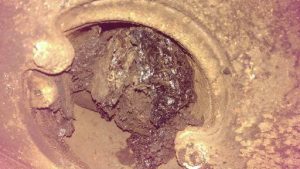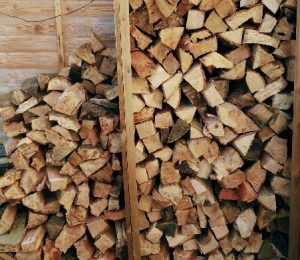Frequently Asked Questions
Not really but here’s a few helpful tips in our short InfoVid.
So in summary:
- Don’t have the fire alight – I know, but it really has happened before. So please don’t light your fire on the day of the sweep, in fact it would be good not to use the fire the evening before if possible.
- You don’t need to cover furniture or remove ornaments from the mantlepiece but it would be useful to remove any ornaments from the hearth.
- It’s helpful to have a clear working are of 3-4ft in front of th hearth. It’s also helpful to have a clear walkway in and out of the room.
- We always cover the area in front of the fireplace but if you have flooring that needs covering on the way to the the fireplace you may want to cover that as we have to wear safety shoes.
This is a very commonly asked question. The simple answer is no, this is very much an issue from the past that has gone away. We carefully mask the front of the fireplace or stove and use a high powered HEPA vacuum to control dust. We also cover a sizeable floor area in front of the hearth.
The only time there may be a little concern in this area is if a bird’s nest is being removed where it is not always possible to fully sheet the front of the fireplace. Even then it has been my experience that dust has been very well controlled.
As a rough guideline see the list below:
- Smokeless coals: At least once a year
- Wood: At least once a year
- Bitumous [house] coal: Twice a year
- Oil: Once a year
- Gas: Once a year
See more details by here.
Absolutely YES. I don’t know why but it is common misconception that stove flues don’t need sweeping and it could prove to be a very dangerous and expensive one.
 The image here shows the outlet of a stove that hadn’t be swept for at least 4 years. As you can see it was almost complletely blocked and would cause dangerous levels of carbon monoxide to escape into the room.
The image here shows the outlet of a stove that hadn’t be swept for at least 4 years. As you can see it was almost complletely blocked and would cause dangerous levels of carbon monoxide to escape into the room.
Stoves flues should be swept at least once a year.
No, actually. from an accounting point of view our preferred payment methods are Contactless (card), BACS (bank transfer), Cash or Cheque. But essentially whatever is easiest for you.
 Cheques are fine but they just take a little longer to process.
Cheques are fine but they just take a little longer to process.
A lot depends on where you actually live. Bath is in a smoke control zone so you can only burn smokeless fuel on an open fire. You can use kindling to help ge it going. For detailed information follow this link to the correct page on B&NES website.
This essentially depends on two things – what type of stove you have and where you live. Regardless of the following, green (unseasoned) wood should not be used.
 1) What type of stove you have. There are basically two types of stove, Wood Burning Stoves and Multi-Fuel Stoves.
1) What type of stove you have. There are basically two types of stove, Wood Burning Stoves and Multi-Fuel Stoves.
Wood Burning Stove – you can burn well seasoned wood and certain procesed wood type fuels such as sawdust logs as long as they are labelled as suitable for use on a stove.
Multi-Fuel Stove – You can burn the above as well as processed Smokeless Fuel.
YOU SHOULD NOT BURN HOUSE COAL. House coal has been known to give off gases at low temperatures that can cause a flash explosion and blow the glass out of the stove door which could cause serious injury. Follow this link for more details.
2) Where you live. Bath is in a smoke control zone so you can only burn wood on a stove if the stove is DEFRA approved and the wood is well seasoned. You can use kindling to help ge it going. For detailed information follow this link to the correct page on B&NES website.
Broadly speaking thw Smoke Control Zone covers the entire city of Bath but click this link the see a detailed map on B&NES website. It’s worth checking as it is an offence to acquire any solid fuel other than an authorised fuel for use in a domestic fireplace in a smoke control area, other than in an exempted fireplace.
